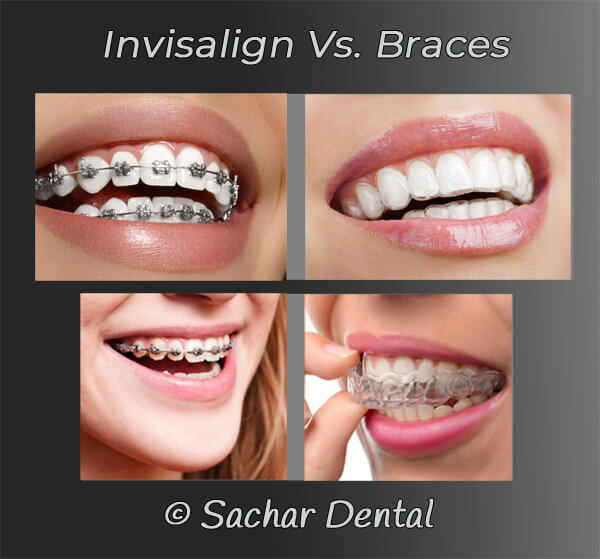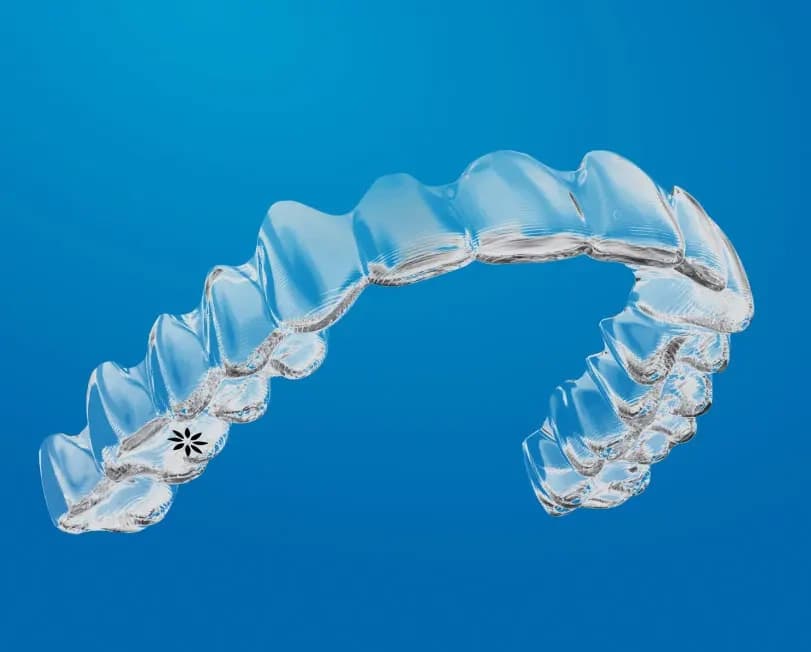Invisalign vs. Typical Braces: Which Alternative Is Right for You?
When taking into consideration orthodontic treatment, the choice in between Invisalign and standard dental braces offers a number of vital aspects that merit mindful evaluation. Invisalign offers a very discreet alternative with removable aligners, while conventional dental braces supply a much more visible yet reliable solution for extreme misalignment.
Summary of Treatment Choices

In comparison, standard dental braces include metal braces and wires that are bonded to the teeth. This approach applies continuous pressure over time to attain placement. While reliable for intricate orthodontic problems, standard dental braces require routine gos to for adjustments and can position difficulties in preserving dental hygiene as a result of the problem of cleaning around cords and braces.
Both choices have their merits, and the selection frequently hinges on particular oral conditions, lifestyle choices, and client conformity. Inevitably, consulting an orthodontic specialist is essential for determining one of the most suitable treatment plan customized to individual demands. Comprehending the subtleties of each option can substantially affect the overall success of orthodontic treatment.
Visual Factors To Consider
A significant factor affecting the choice in between Invisalign and standard braces is the aesthetic appeal each therapy offers. Invisalign aligners are crafted from clear plastic, making them practically invisible when put on.
In contrast, traditional braces are composed of steel brackets and cables, which can be more noticeable. While developments in orthodontic modern technology have actually brought about the development of smaller brackets and colored elastics, traditional braces still preserve a more conspicuous account. For some people, the visibility of dental braces might prevent them from seeking necessary therapy.
Eventually, the selection in between Invisalign and traditional dental braces may depend upon individual preferences pertaining to appearances. Individuals who focus on discretion often favor Invisalign, while those that are less concerned regarding visibility might go with conventional dental braces. Recognizing the aesthetic implications of each option is critical for making a notified choice that aligns with one's way of life and choices.
Convenience and Convenience

In terms of comfort, Invisalign aligners are removable, making it possible for clients to appreciate their favorite Visit Website foods without constraint and preserve ideal oral health. Brushing and flossing are simplified, as the aligners can be gotten throughout these routines, whereas standard dental braces need cautious navigating around brackets and cables.
In contrast, typical braces require normal changes, making them less practical for those with busy routines. On the whole, the comfort and benefit of Invisalign make it an enticing choice for numerous people seeking orthodontic therapy.
Therapy Duration and Effectiveness
While both Invisalign and standard dental braces work in correcting oral imbalances, the period of therapy can vary dramatically in between both choices. Usually, Invisalign treatment can take anywhere from 12 to 18 months, depending on the intricacy of the instance. The clear aligners function by gradually shifting teeth into their wanted positions, and regular follow-ups with an orthodontist assistance make certain progress stays on track.
In comparison, typical braces often call for a longer dedication, usually varying from 18 months to 3 years. This is because of their set nature and using brackets and cords, which can be a lot more reliable for severe imbalances and complicated cases (Invisalign). The therapy effectiveness of traditional braces is well-documented, as they permit for accurate changes and greater control over tooth movement
Eventually, the option in between Invisalign and typical dental braces may pivot on both the anticipated treatment period and the certain dental issues handy. Consulting with an orthodontist is crucial, as they can offer customized referrals based on private demands, ensuring the selected approach straightens with wanted outcomes and durations.
Price Contrast and Insurance Coverage Choices
Price plays a substantial role in the decision-making process for people considering orthodontic treatment, whether choosing for Invisalign or conventional dental braces. On average, the expense of Invisalign important site ranges from $3,000 to $8,000, while traditional dental braces normally cost in between $2,000 and $6,000. Aspects influencing these expenses include the intricacy of the situation, the period of treatment, and geographical area.
Insurance policy coverage can dramatically affect out-of-pocket expenses. Several dental insurance strategies supply partial protection for orthodontic treatments, yet the specifics can vary widely. It is important for people to examine their insurance policy plans to identify the extent of protection for either alternative. Normally, conventional braces may be extra often covered by insurance policy plans contrasted to Invisalign, which some insurers categorize as an aesthetic treatment.
In addition, a number of orthodontic practices supply versatile layaway plan, making both treatment options extra obtainable. Individuals ought to ask about potential funding options and price cuts for in advance payments. Evaluating the complete expense, including insurance benefits and payment plans, is important for making an informed choice that aligns with both aesthetic preferences and budget considerations.

Verdict
In recap, the option between Invisalign and standard dental braces hinges on multiple aspects, check this site out consisting of visual choices, convenience, therapy period, and price. Invisalign supplies a very discreet, removable choice that promotes dental hygiene and dietary versatility, while conventional dental braces might be preferable for complicated oral issues and commonly come with a lower rate factor. Eventually, consultation with an orthodontist is important to analyze private circumstances and identify the most proper treatment choice for accomplishing ideal dental alignment.
When thinking about orthodontic therapy, the selection in between Invisalign and conventional braces presents a number of vital variables that warrant careful analysis.Contrasting Invisalign and typical dental braces discloses distinctive therapy choices for orthodontic adjustment.While both Invisalign and conventional braces are reliable in correcting oral imbalances, the period of therapy can differ substantially in between the two choices.Price plays a substantial role in the decision-making procedure for individuals thinking about orthodontic treatment, whether choosing for Invisalign or traditional dental braces.In summary, the selection between Invisalign and typical dental braces hinges on several elements, consisting of visual choices, comfort, therapy period, and cost.